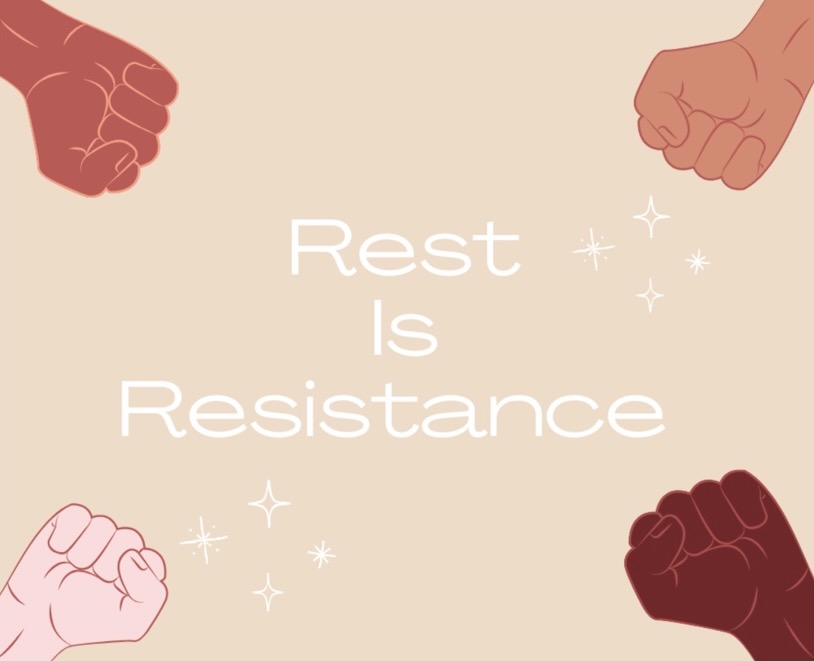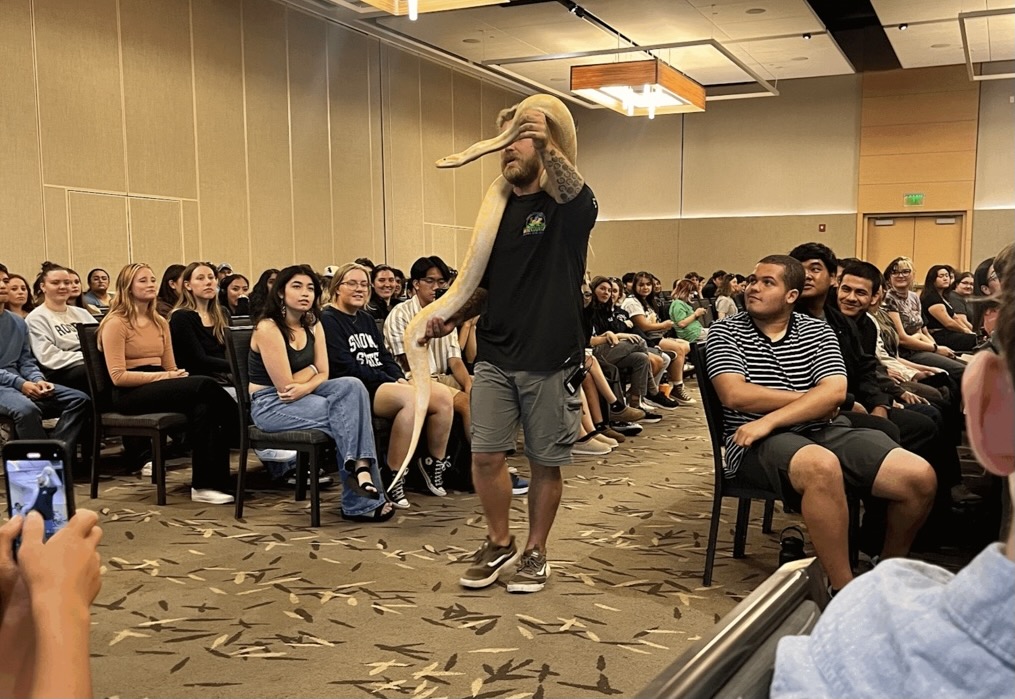STAR // Justin Freeman
The Sonoma State University Art Gallery featured three professional artist’s work with a common theme: the use of lines.
Sonoma State University’s very own University Art Gallery always seems to have something interesting on display. From Nov. 5 to Dec. 13, the Art Gallery showcased three professional artists in an exhibition called “Linear Equations.” The works of these artists all had a style of their own, but each shared the common characteristic of being made from lines of different types. From nylon straps to copper wires, and long strings of yarn to strokes of paint, these artists embodied the long-standing history of linework through their creations, all while maintaining unique styles of their own.
For instance, the displayed works of artist Marc Katano, who is based in Sonoma County, consisted of dark brushstrokes over blank canvases. They looked much like cross-breeds of Eastern calligraphy and contemporary graffiti art. While the largest piece must have been 12 feet tall by 12 feet long, the smallest was maybe only three feet high by three feet across. It was interesting to see just how many shapes one could make out of the simplistic lines of paint; one would perhaps be reminded of cloud gazing in doing so, as it was easy to see how two different people could interpret the same picture in two completely different ways.
“While his compositions are organic in form,” says Michael Schwager, the director of the University Art Gallery, “Katano does not intend them as emulations of nature but rather abstract records of their own creation.”
‘Abstract’ was certainly a good word to use, as Katano’s paintings didn’t seem to take on the shape of anything, except for the shapes people saw for themselves.
Napa’s Sabine Reckewell, another professional artist who was featured in “Linear Equations,” created her works mostly by pinning strings of yarn to the wall, with the exception of one piece, which was made from straps of nylon. It was fascinating to see how the lines would criss-cross each other and work together to comprise a greater whole. One piece in particular, called “Under and Over” consisted of two different shapes. The first was a twisted plane of stark orange yarn, which was so simple in design, yet so difficult to describe through words. It was contrasted by an elongated ray of perhaps 30-40 strings, stretched tightly to form a stiff beam shooting over the orange shape below, complementing the bright orange with its mellowing blue hue. According to Schwager, “Reckewell calls these installations three-dimensional drawings.” This could certainly be seen in her other works as well, which may have struck viewers as merely two-dimensional on the first glance. The triple dimensionality of these pieces was created by alternating colors, which made the flat planes of string appear to have elements of depth to them, that may have been easily missed by casual passersby.
The third artist showcased by the University Art Gallery this past month was Mari Andrews, who lives in Emeryville. She worked mostly with steel wires to create her pieces, but added bits of nature throughout as well such as acorns, wood, flax, and mica. This was an interesting blend of man-made materials and natural formations. One of the first pieces visible upon entering the Art Gallery was Andrews’s “Wild Hair.” Whereas some may have indeed seen a mess of hair in those metal wires, others may have seen a lightbulb, or even a hot air balloon. This rang true for Andrew’s other works as well; just like Katano and Reckewell.
Andrews created pieces that could be seen in many different ways. Like Katano, her works were abstract, and like Reckewell, they had both two and three dimensional aspects to them. Reckewell’s “Curleaf”, which was made from metal wire and bamboo, bore resemblance to a human being putting their hands on their heart, perhaps out of flattery, or perhaps out of disgust. The fact that “Curleaf” had no vestige of a face made this particular interpretation a compelling one, and showed the power that lines have to define images that we see.
Truly, lines do play a major role in our sense of sight. “Line as an element of visual art,” noted Schwager, “has been described as an identifiable path created by a point moving in space and varying in width, direction, and length.” By seeing the how the same image can be viewed in different ways simultaneously, one can perhaps attain an appreciation for how our perceptions can shape our perspectives on reality.


































